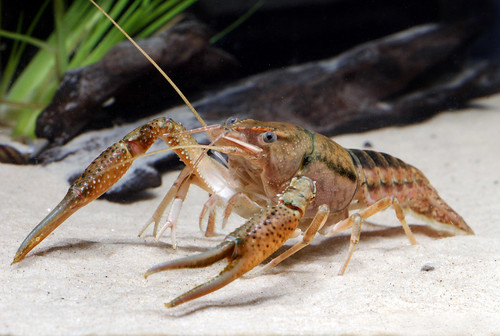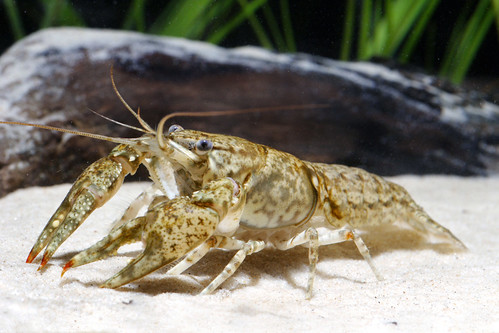
To raccoons, snakes and opossums, crayfish look pretty tasty, and large crayfish will even cannibalize their smaller kin. Crayfish, which live in rivers and streams, need instream cover to hide from all their predators. They also use cover to find food, to shelter while incubating eggs, and to keep themselves from being washed away in floods.
Susan Adams, a fisheries research scientist for the Forest Service’s Southern Research Station, examined different types of cover in the Yazoo River basin of Mississippi to see whether crayfish used large pieces of household trash for shelter when natural cover was limited. Her findings recently appeared in the journal Environmental Management.
Rivers and streams in the Yazoo River basin have undergone major changes due to historic land-use and river management. Deepening and widening of the stream channels has increased water velocities in streams and rivers, resulting in unstable streambeds and an extreme loss of cover for aquatic species.
“There is some habitat variation, especially in headwater streams,” Adams said. “However, most streams in north-central Mississippi are highly simplified.”
In some streams, trash – old tires, televisions, refrigerators, car parts, and other discarded household items – provides the most complex and stable cover available.

Although trash is rarely considered quality habitat, certain types of large trash provide shelter and hard substrates for marine life, but very few studies have examined whether small, freshwater animals use trash as an artificial reef.
Adams selected eight study sites in the Yazoo River basin and established 294 plots that were evenly split between three cover classes – natural cover, such as logs or masses of leaves and roots; large pieces of trash; or no cover. Adams caught 413 crayfish, most of them (253) in plots with natural cover, followed by trash (154) and no cover (8). Across all sites, the percentage of plots containing crayfish was similar between garbage and natural cover plots, but significantly lower in plots without any cover.
“This study suggests that while crayfish do use trash (as shelter), it is probably not an adequate surrogate for natural cover,” said Adams. “However, large trash in streams appears to be functioning as an artificial reef, especially for larger crayfish.
Ultimately, the conclusions extend beyond whether or not trash is beneficial as cover, and show that crayfish in the region depend heavily on instream cover. While natural cover is best, maintaining it in degraded streams can be difficult. In incised streams, the river channel often becomes so wide that during low flows, the roots of streamside plants – an important type of natural cover for small crayfish – lose contact with the water. However, as long as rivers are not dredged and land use does not dramatically change hydrology, secondary floodplains will eventually develop along incised banks to help provide the stable, complex cover that crayfish, fish and other animals depend on.

